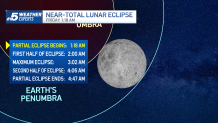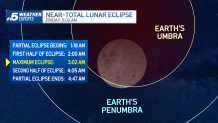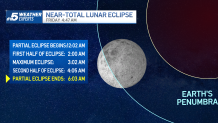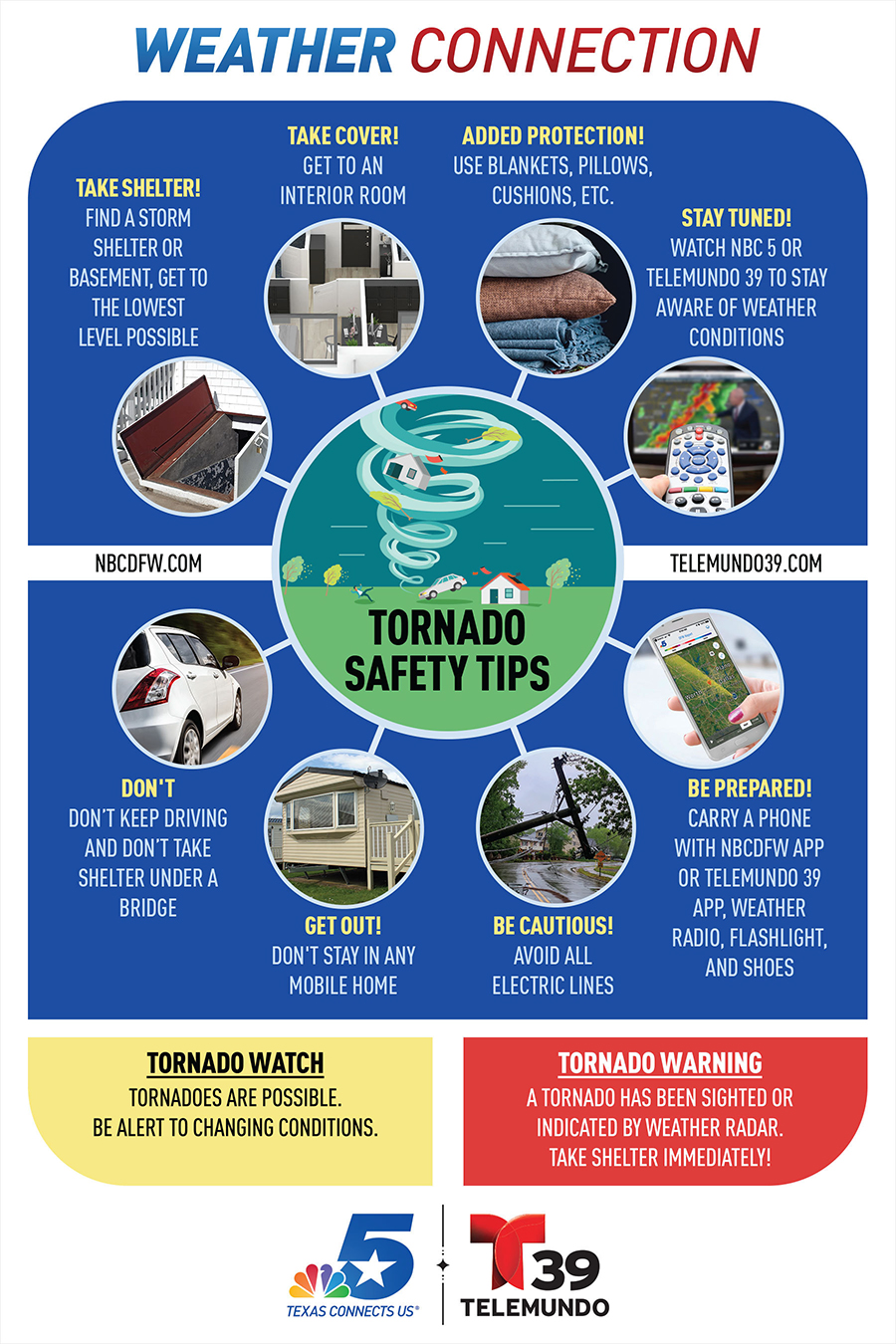A long lunar eclipse that bathed the moon in red light was visible in all of North Texas for several hours Friday morning.
Photos: Longest Lunar Eclipse in Centuries Bathes 99% of Moon in Red
During the eclipse, NASA reported up to 99.1% of the moon would be in the shadow of the Earth, so it's not considered a total eclipse, but it's close.
Get DFW local news, weather forecasts and entertainment stories to your inbox. Sign up for NBC DFW newsletters.
It was the longest partial lunar eclipse in 580 years (since 1440), lasting just over six hours from roughly midnight to 6 a.m.; another lunar eclipse this long isn't expected for 648 years (in 2669).
So, this was literally a once-in-a-lifetime lunar eclipse.

It began at 12:02 a.m. CT when the moon enters the Earth's penumbra.
Think of the penumbra as a slight shadow cast by the Earth. During this phase, the moon dims a bit at first and the eclipse isn't all that noticeable.
The most noticeable part of an eclipse is when the moon enters the umbra or the thicker part of the Earth's shadow. This began at 1:19 a.m. and lasted until 4:47 a.m.

During this time, the moon shows a deep red appearance as blue light is scattered after traveling through the Earth's atmosphere leaving only red light hitting the moon. The more dust or clouds in Earth's atmosphere at this time will cause the moon to appear even redder.
The best time to view the moon bathed in red light was between 2:45 a.m. and 3:20 a.m. The peak of the partial eclipse occurred at 3:02 a.m.
At 4:47 a.m. the moon passed out of the Earth's umbra. At 6:04 a.m., more than six hours after first entering the penumbra, the eclipse ends.
Unlike solar eclipses, lunar eclipses are safe to view with the naked eye.

Space News
CONTINUING WEATHER COVERAGE
Stay up to date with the latest weather forecast from NBC 5's team of Weather Experts by clicking here or by watching the video below.

Be prepared for your day and week ahead. Sign up for our weather newsletter.



